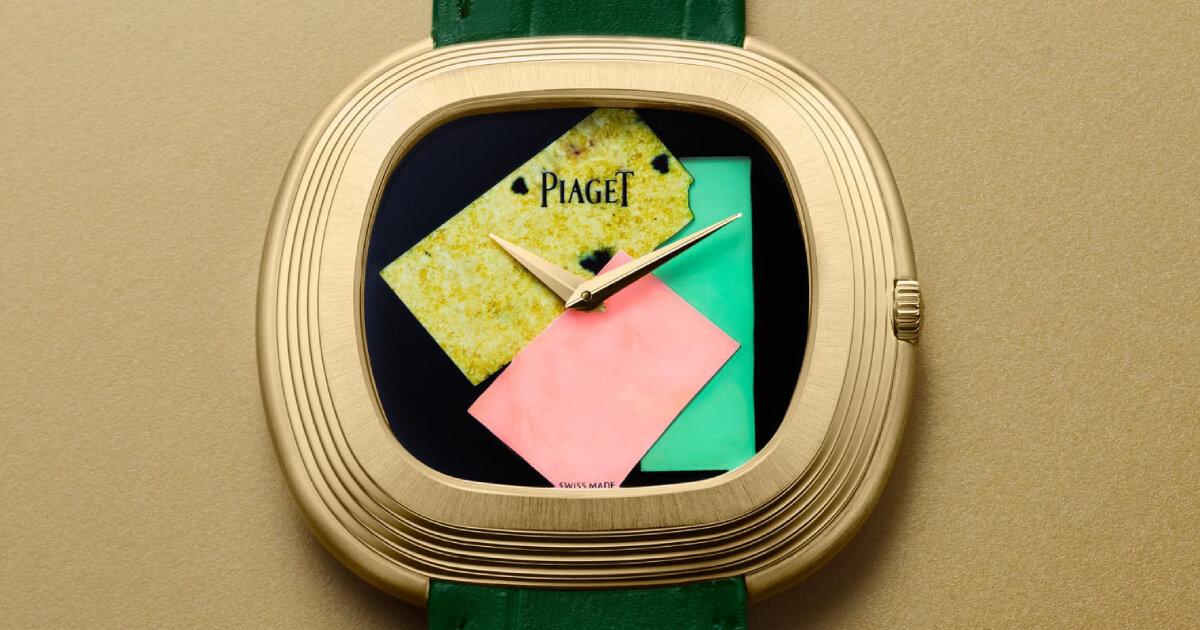Piaget turns andy warhol’s self-portait into collage watch
Art and timepiece design meet as Piaget draws inspiration from Andy Warhol’s 1986 Self-Portrait work for the design of its Collage watch. An interpretation of the structure and color composition in the renowned artist’s portrait, the Piaget watch is the accumulation of a six-month study of Andy Warhol’s work and archives. The watchmaker’s designers focus on integrating the idea of a collage into a small, functional object, and the result is a dial that uses stone marquetry, a technique that arranges small pieces of inlaid stone to form an image. Many of the watch’s design elements refer to the relationship between Andy Warhol and Piaget.
The base of the dial is made of black onyx, the same material used in the artist’s personal Piaget watch from 1973. Even the case of the timepiece, which is made of 18-carat yellow gold, is also a direct reference to the watch model he owned (the gold case is specific to this Collage model and is not used in the standard Andy Warhol collection by the watchmaker). The caseback continues the theme of the collaboration, engraved with the outline of the artist’s 1986 self-portrait as well as both the Piaget logo and Warhol’s signature. On top of the black onyx in the dial, the craftsmen add thin slices of Namibian serpentine, pink opal, and chrysoprase, creating a pattern that alludes to the abstract composition of the artist’s self-portrait.
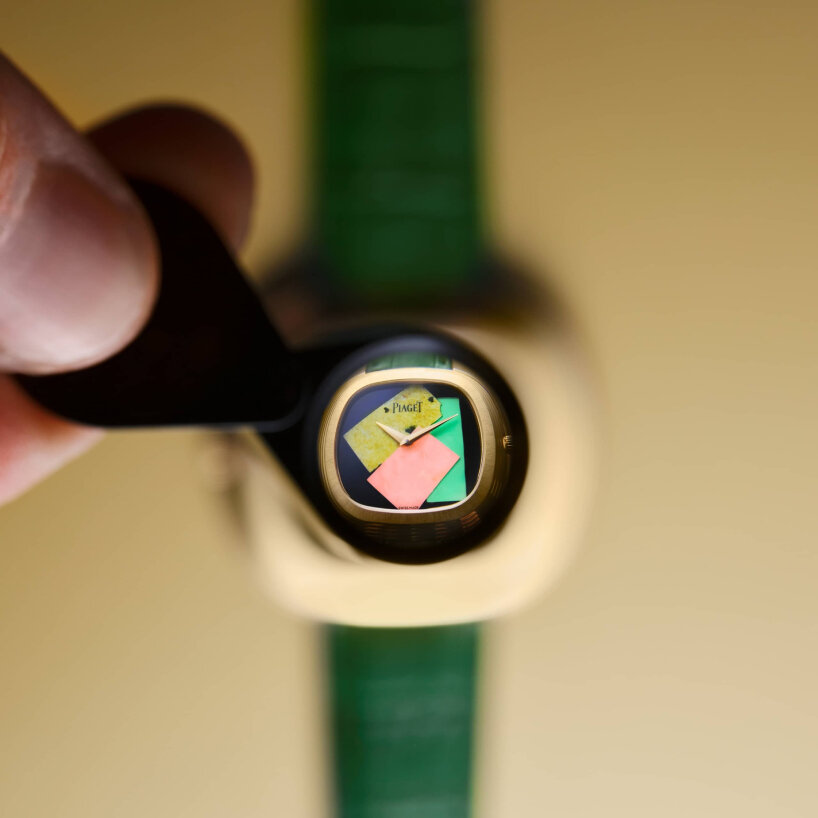
all images courtesy of Piaget
Timepiece design references to the famed artwork
Inside the Collage watch by Piaget, the company’s designers use the in-house 501P1 self-winding mechanical caliber to give the timepiece a 40-hour power reserve. Each piece of the model is assembled by hand in Piaget’s Swiss manufacture, and the process includes gem-setting, engraving, and final calibration. The use of stone marquetry requires manual cutting and adjustment of each mineral fragment, as these natural materials vary in hardness and thickness. In addition to the limited run of 50 watches, Piaget says collectors can select different combinations of dial stones or change the color and texture of the leather strap. Andy Warhol’s 1986 Self-Portrait series, often called Fright Wig, was the artist’s last major project before his death in 1987. The series was first requested by the artist’s London gallerist, Anthony d’Offay, who commissioned new self-portraits for an exhibition.
He completed the works in 1986, shown in London that same year, and these became his final self-portraits. The project began with Polaroid photographs of Warhol wearing his silver wig, his foundation for the subsequent set of silkscreen prints on canvas. For this series, he used synthetic polymer and acrylic paints along with silkscreen ink, and the technique combined industrial printing with hand-applied color. In terms of composition, the artist changed his usual format, as the portraits only show his face in close-up, without the neck or shoulders. His head fills the frame and appears to float against a solid black background. This becomes the dial backdrop for the Piaget watch named Collage, and the shifting film colors of the self-portrait mark the stone collage in the timepiece design.
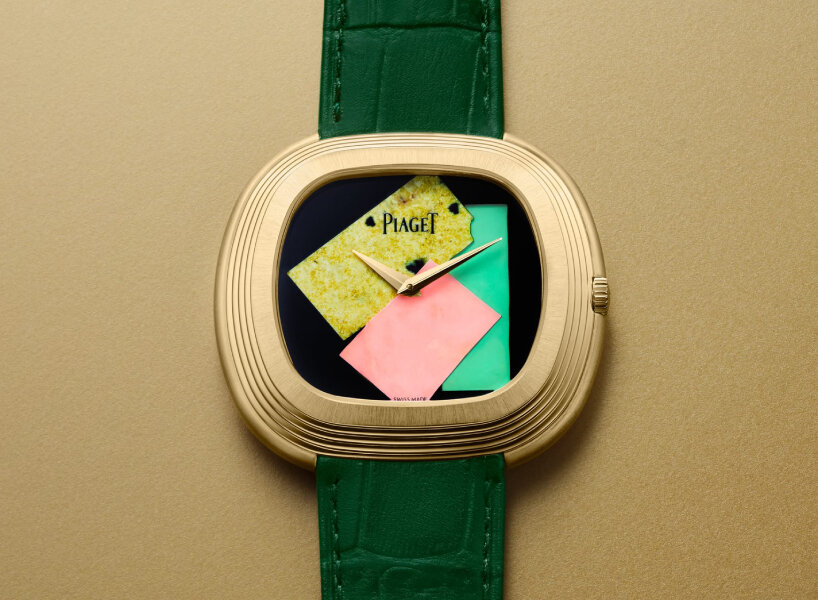
the base of the dial is made of black onyx, the same used in the artist’s personal Piaget watch from 1973
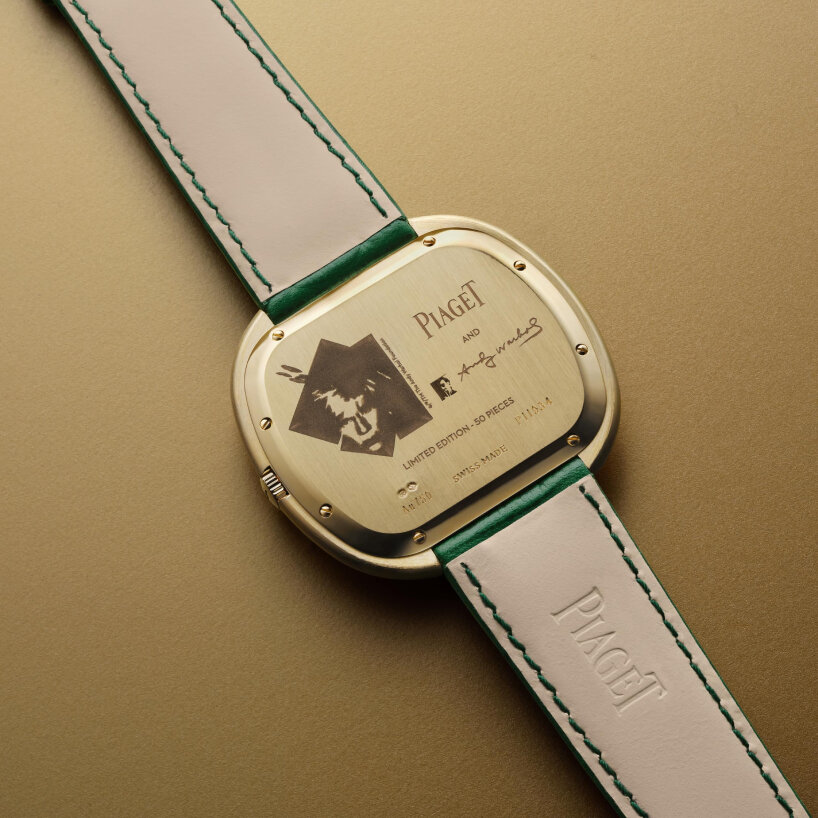
the caseback comes with engraved outline of the artist’s 1986 self-portrait
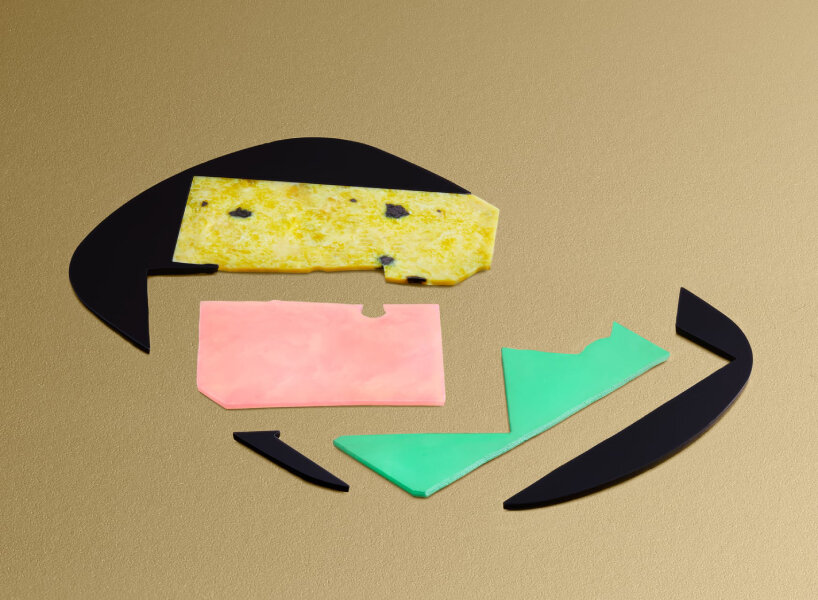
the craftsmen add thin slices of Namibian serpentine, pink opal, and chrysoprase
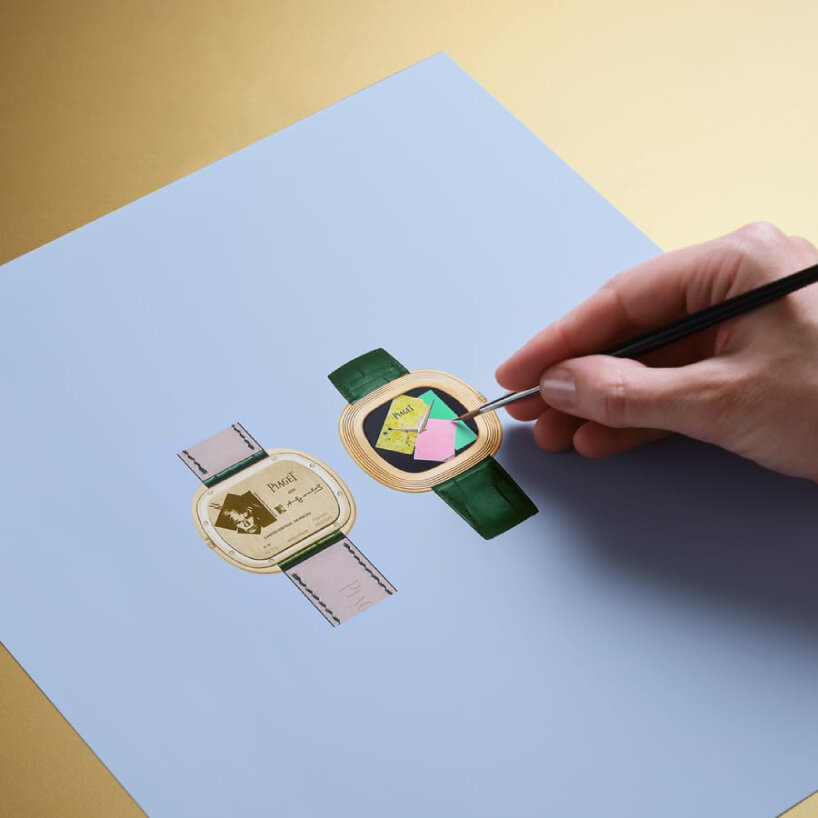
the case of the timepiece is also a direct reference to the watch model Andy Warhol owned
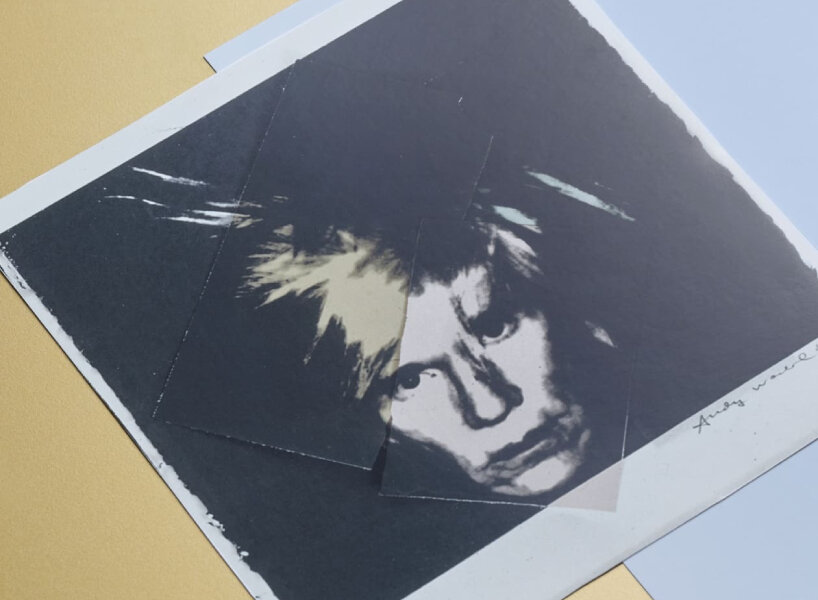
Andy Warhol, Self-portrait, 1986
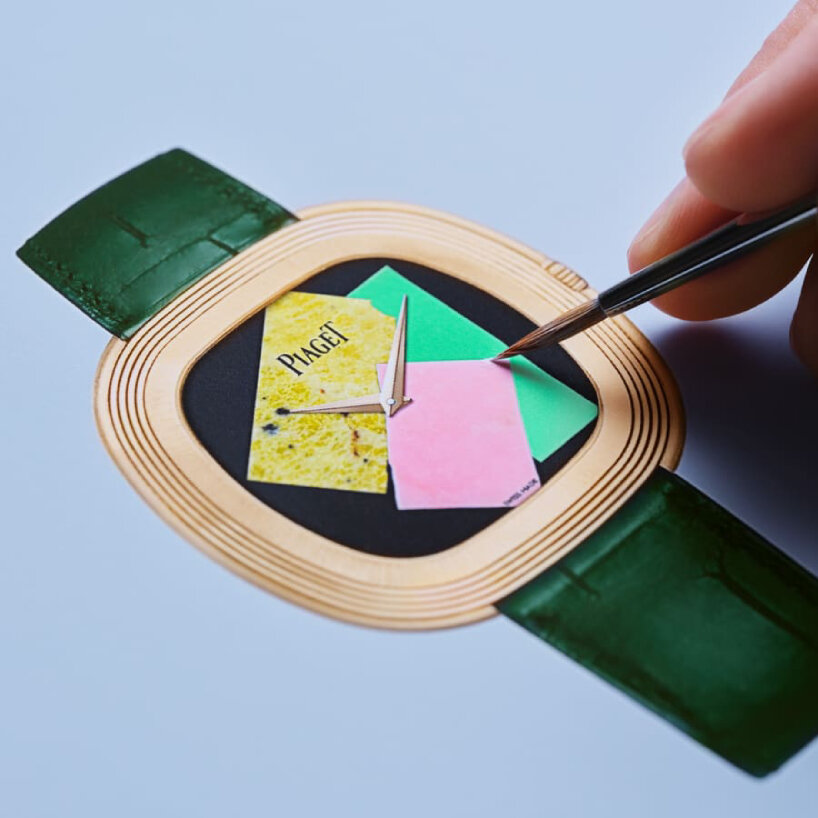
detailed sketch of the Collage timepiece design

